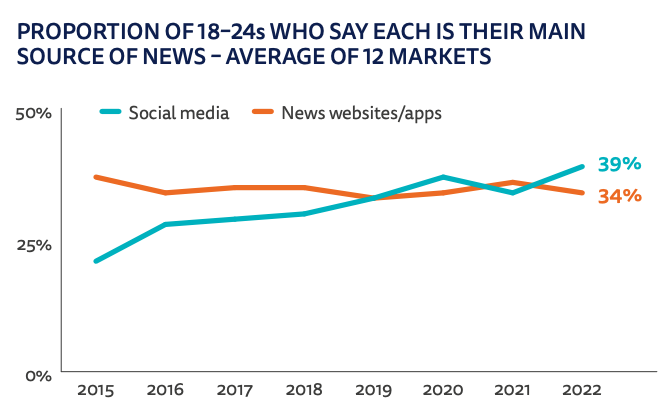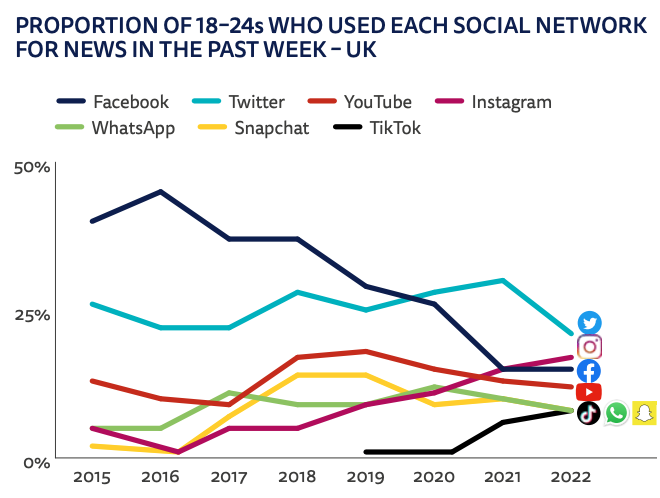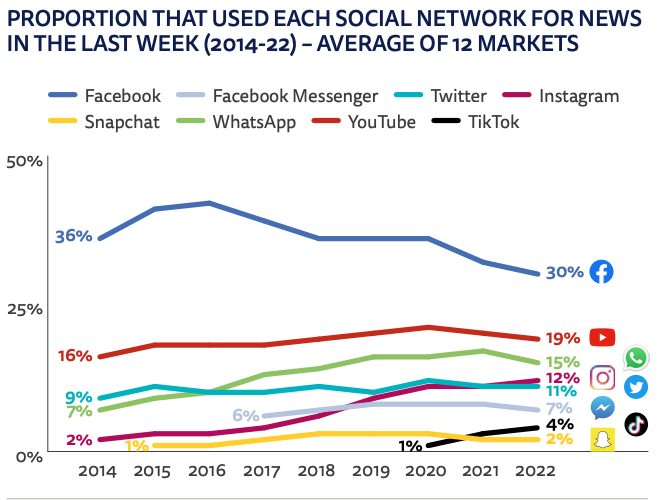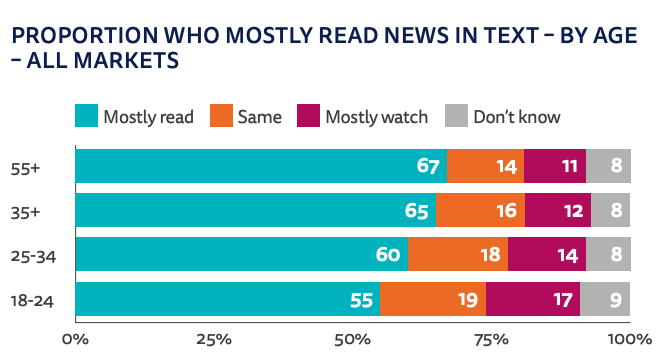Among younger generations, social media has become an increasingly common and valid way to consume news. Partly this is because younger audiences see that news can be shared (and engaged with) in several different ways: what you should know (obviously), but also what is useful to know, what is interesting to know, and what is fun to know.
Our two penny’s worth: for many people, the way content is being formatted and published is becoming more and more important. Social media highlights the possibilities in using short form, video, interactive elements and alternative formats. For traditional media companies, that should be reason enough to start changing the way they traditionally think about formatting and publishing news.
For starters, here are some compelling findings from the Reuters Digital News Report 2022:
- Social media has become the most important source of news for the younger audience.







